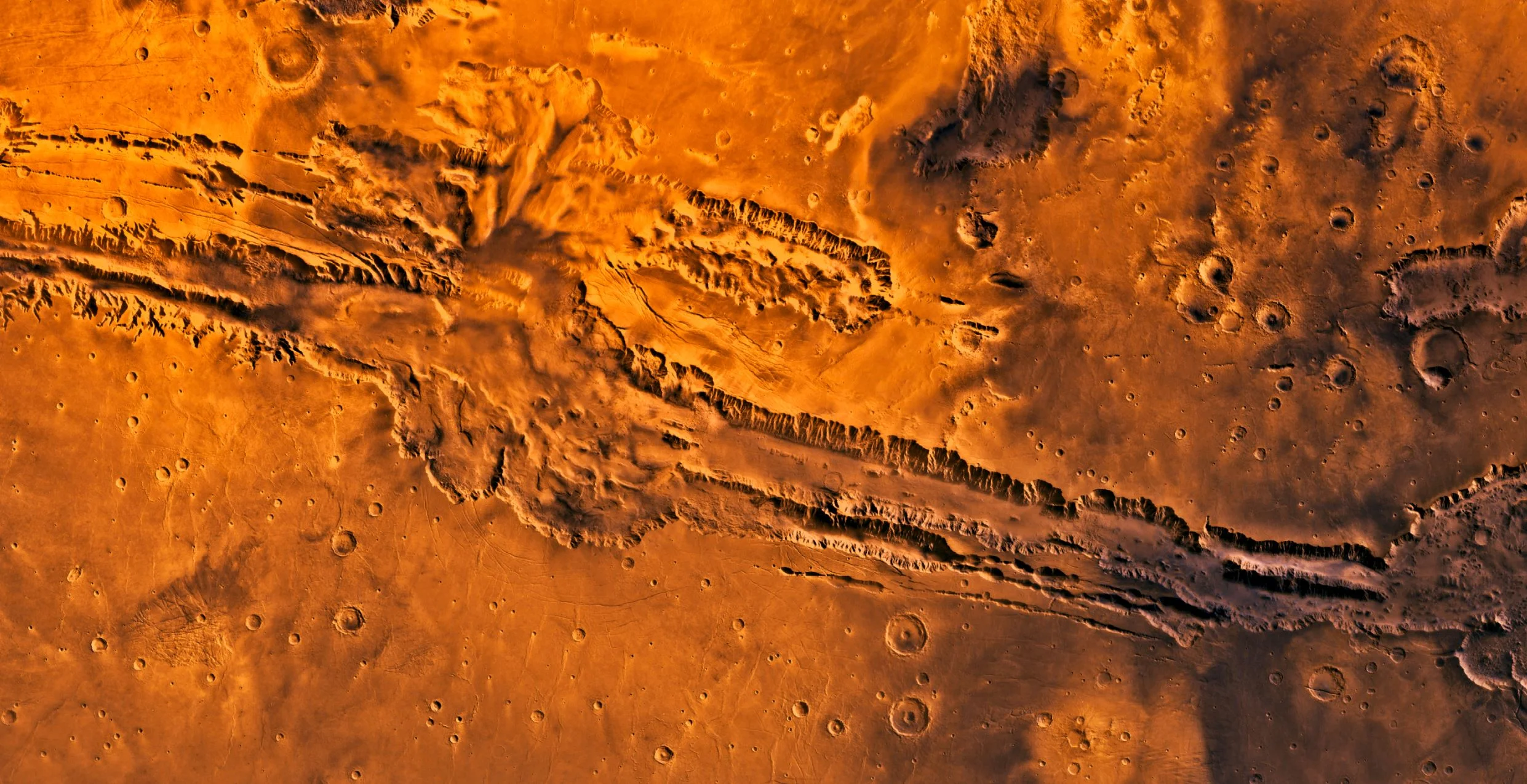Subject: The dispersion of microbial life on Mars via wind-transported dust
Life on Mars has been the fascination of astronomers and the general populous alike for centuries. During the end of the 19th and the beginning of the 20th century there where even some who believed that there was intelligent life on Mars. Perhaps the most famous proponents of which was the astronomer Giovanni Schiaparelli, who erroneously mistook an optical illusion generated by a low-resolution telescope as canals, dug by intelligent life forms. We now of course know that on Mars, the existence of intelligent life or even life on macroscopic scale is extremely unlikely.
Image Credit: NASA/JPL/USGS - HDR tune by Universal-Sci
However as time went on we shifted our focus to potential microscopic alien life forms existing on the red planet. One fascinating discovery was made on a Martian meteorite called ALH84001 in 1996. An electron microscope revealed microscopic features and geochemical anomalies that researchers thought could be best explained by the rock having hosted Martian bacteria billions of years ago. Later on though, these features where found to also be explainable by non-biological processes.
Another counter point that was made with regards to the size of the structures. They where found to be much smaller than any known life on earth. This on its own is of course not enough to assume that life forms of that size could not at all exist.
Although the discovery was very intriguing, it is was considered to only be circumstantial evidence for the existence of simple life forms on Mars billions of years ago. Nonetheless it was a significant moment in the development of exobiology.
Small bacteria-like features discovered on the meteorite fragment, AHL84001 - Image Credits: NASA via Wikimedia Commons
Research on the potential for microbial life on mars continued, covering many different concepts and approaches. Which brings us to a fascinating recent study on the subject, published in the journal Scientific Reports
The Atacama Desert
Researchers wanted to see if it is possible for microbial life to be scattered around using dust propelled by wind. To test their theory they went to the Atacama Desert in Chile, the driest and oldest desert on earth. It is an ideal desert for Mars research as it is the place on earth that is the most analogue to the Martian landscape. Intriguingly though, despite the almost Martian level of drought and high levels of UV radiation, there is actual microbial life living there. Perfect circumstance to test what the researchers where out to do.
Sure enough they discovered a number of viable bacteria and fungi able to in fact wander the most UV irradiated and driest desert on Earth via dust propelled by the wind, unharmed. The bacteria and fungi where discovered on three different sampling sites spread across the desert. Interestingly enough Only 3 of the species where shared among transects. This could be an indication of different airborne ecosystems in different sections of the desert.
Extrapolating this surprising discovery to Mars, similar-sized alien lifeforms might also benefit from this phenomena to spread across the red planet in search of habitable spots to thrive and multiply. All of this remains speculation of course until viable ways of actually testing this on Mars itself are possible. We for one, can’t wait to see where future research on the actual Martian surface may lead.
Sources and further reading: Article: Aeolian transport of viable microbial life across the Atacama Desert, Chile: Implications for Mars / EurekAlert news release / AH84001 /Life on Mars
If you enjoy our selection of content please consider following Universal-Sci on social media:











